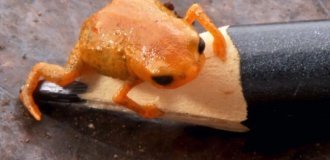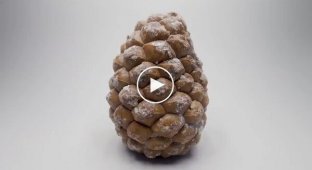The largest bee on the planet with the jaws of a monster: it died out and was resurrected twice! (9 photos)
Its shadow flickers among the centuries-old trees of the dense jungle, and the roar of its flight is more reminiscent of the noise of helicopter blades. Enormous, almost unreal, like a forgotten experiment in evolution. Meet the largest bee in the history of the planet - Wallace's bee. 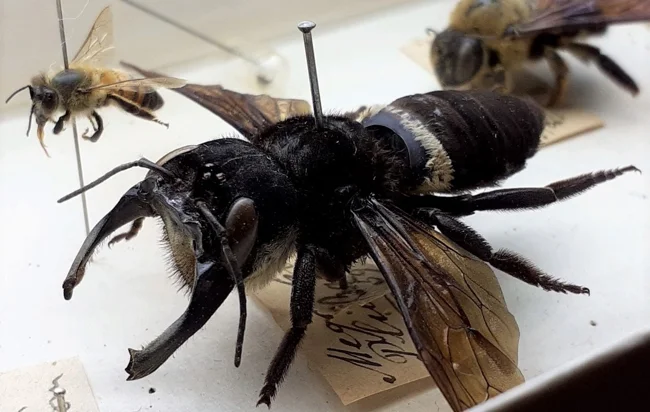
To help you understand how huge the Wallace's bee is, remember what a standard honey worker looks like. Now increase it four times. Congratulations, the flying Godzilla is ready! The length of worker bees reaches 4 cm, and the wingspan is 6 cm. Among bees, these are the maximum dimensions that scientists have ever recorded. Moreover, both among living and extinct species. 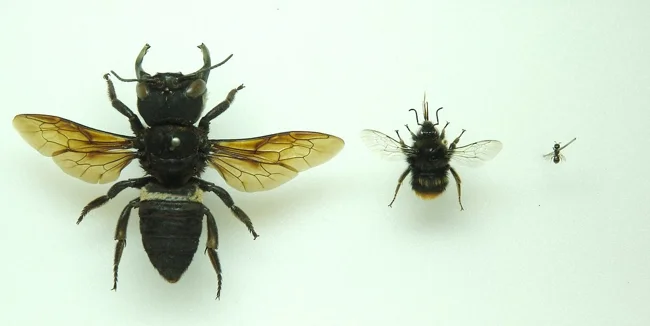
There is a flying carpet. And this is a helicopter bee!
Isn't that enough? Then attach equally gigantic jaws to the giant bee. Yes, the growths on the head are not horns, they are the mouth apparatus! With its powerful mandibles, the insect can even crush wood. 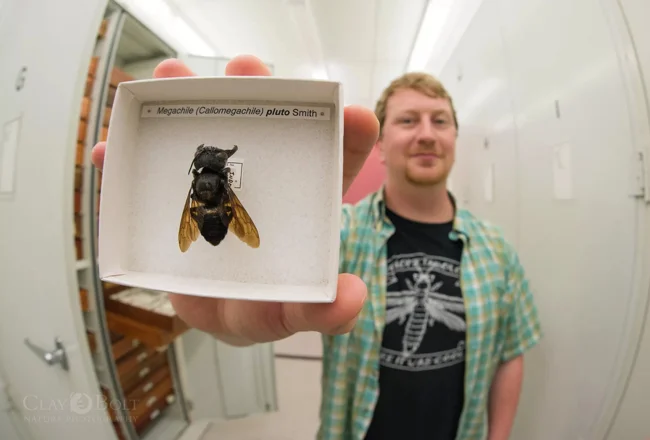
Almost all the photos of the bee are from private collections and museums. And all because in its natural habitat with a camera it was met only once!
Why hasn't humanity armed itself with flamethrowers yet? The fact is that it is not easy to find Wallace's bee, even if you look for it specifically. In the zone, so to speak, of destruction, there are only three small islands located next to each other: Bachan, Halmahera and Tidore (Indonesia). And even there the bee wandered into such wilds that the locals did not even suspect its existence. And scientists even believed that it was extinct. Twice! 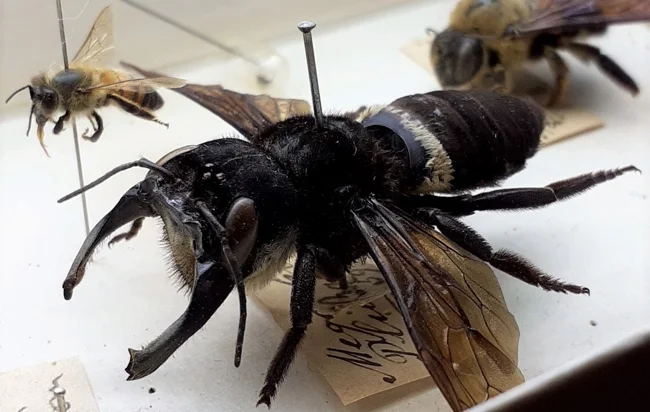
Perhaps scientists deliberately did not look for it very thoroughly? Looking at the samples, you can understand them!
The first person to document an encounter with a hymenopteran monster was Alfred Wallace. A man not only with nerves of steel, but also with an indefatigable sense of discovery. During his wanderings, he collected specimens of more than 125 thousand organisms! In the end, about 83 thousand of them were insects. The naturalist himself did not analyze his findings. The realization that humanity had encountered the largest bee on Earth came much later. When entomologists rushed to look for it, the insect had disappeared without a trace! So the Wallace bee "died out" for the first time. 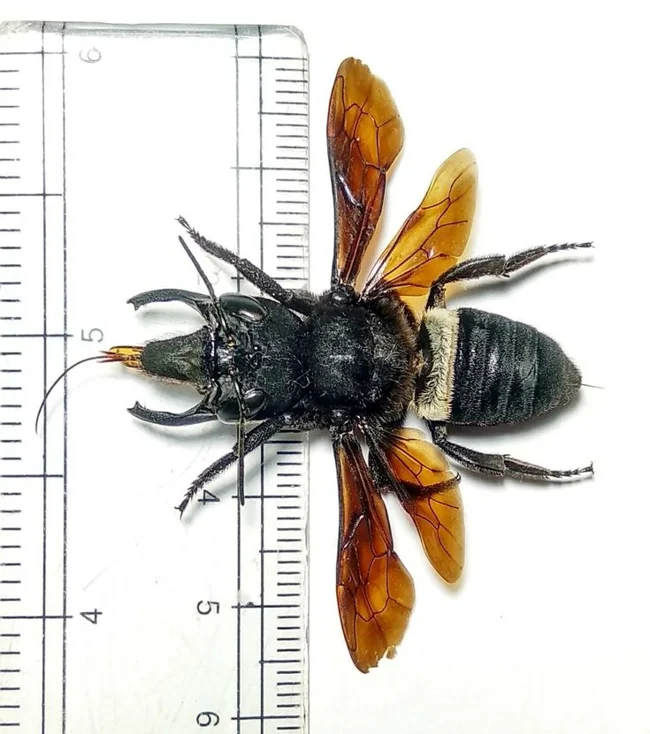
This is the case when 6 centimeters is a lot!
Only 123 years later it was resurrected! In 1981, entomologist Adam Messer found 6 nests. And not in one place, but on different islands. It turned out that bees do not build their hives. They squeeze out living space from tree termites. The hymenopteran racketeers separate their nests from their neighbors' nests with resin. This is, in fact, what they need their huge jaws for. With their powerful mandibles, they bite through wood and scrape off the viscous building material, rolling it into a ball. 
The only way to take a selfie with a bee without risking your physical and mental health.
Another important fact that scientists learned from this expedition will give you a little relief. Unlike most bees, yellow-black helicopters from the jungle do not form large families. The most numerous "apartment" was registered in only 157 cells. Hurray?.. 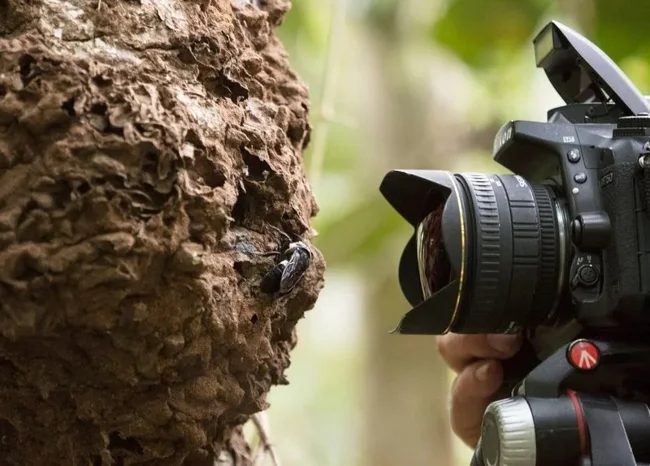
This is private property, filming is prohibited here!
After meeting the giant insects, the joy mixed with horror did not last long. The bees disappeared again! Entomologists combed all the forests of those islands where they had previously found nests. They listed Wallace's bees in the top 25 "most wanted" extinct species. But to no avail! The insects "died out" for the second time. 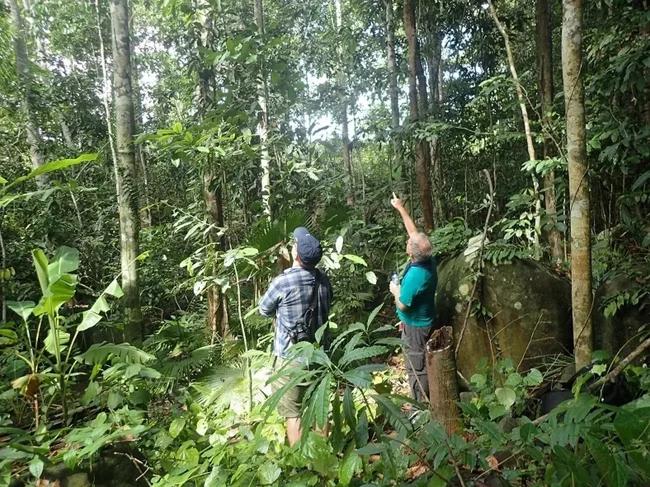
Look, do you see that hive with giant bees? We don't go there!
The golden moment came in 2019, 38 years later. Scientists decided to repeat Wallace's route and, bingo, the bee was found again! Entomologists got their hands on a female. All the photos of Wallace's bee in the wild are from that very significant expedition. To this day, they are the only ones! 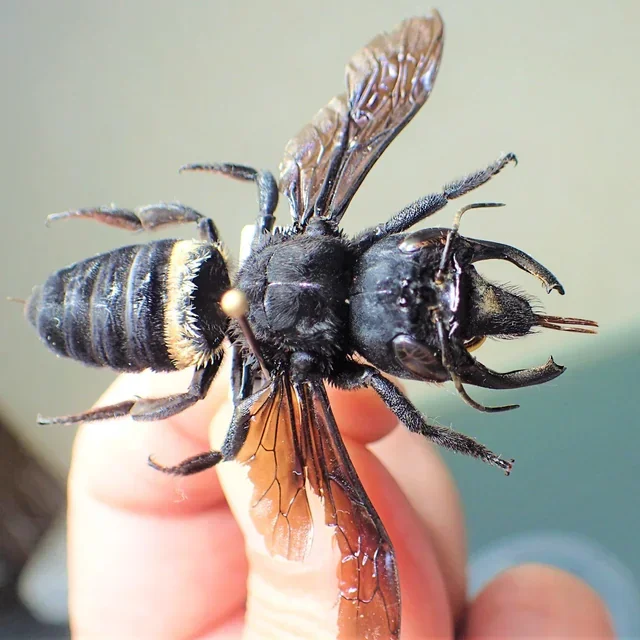
The team was prompted to search by an ad on eBay, which was selling samples of the insect.
The largest bee in the world remains one of the biggest biological mysteries! Will it die out for the third time? Will it rise again? Nobody knows!









